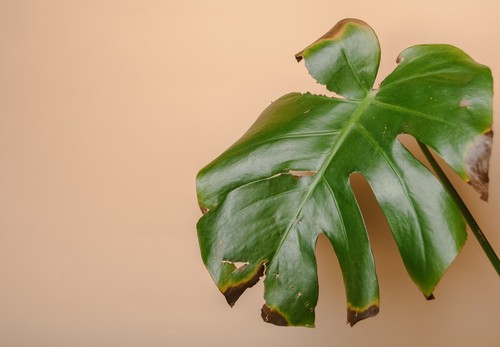Black spots on houseplant leaves can be a cause for concern for many plant owners. These spots can appear for a variety of reasons and can be a sign of an underlying issue that needs to be addressed. Identifying the cause of black spots on houseplant leaves is important in order to properly treat and prevent them from occurring in the future.
Common causes of black spots on houseplant leaves include fungal or bacterial infections, pest damage, aging, and nutrient deficiencies. Overwatering can also cause black spots, so it’s important to rule out this issue before moving on to other possible causes.
Pests such as spider mites, mealybugs, and scale insects can also cause black spots on leaves, so it’s important to inspect plants regularly for signs of infestation.
Treatment methods for black spots on houseplant leaves vary depending on the cause. Removing affected leaves, isolating the plant, and treating with fungicides or insecticides are common methods used to treat black spots on houseplant leaves.
Preventing black spots on houseplants involves proper care, including regular watering, fertilizing, and pest control. Monitoring environmental factors such as temperature and humidity can also help prevent black spots from forming.
Key Takeaways
- Proper identification of black spots on houseplant leaves is important to determine the cause and appropriate treatment method.
- Common causes of black spots include fungal or bacterial infections, pest damage, aging, and nutrient deficiencies.
- Preventing black spots involves proper care, including regular watering, fertilizing, and pest control, as well as monitoring environmental factors.
Check out these other related posts:
Identifying Black Spots on Houseplant Leaves
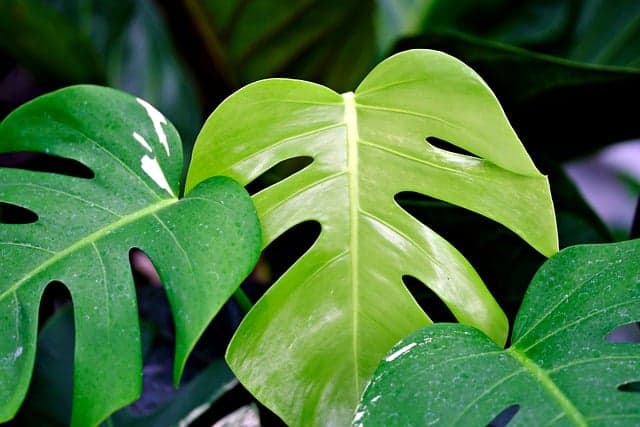
Black spots on houseplant leaves can be a sign of a variety of issues. These spots can be small or large and can be caused by different factors such as pests, fungal infections, physical damage, and more. It is important to identify the cause of the black spots to determine the best course of action to take.
One common cause of black spots on houseplant leaves is a fungal infection. Fungal infections can cause dramatic black spots on the leaves and can be identified by small black dots or fruiting bodies of the fungi visible in dead tissue.
Symptoms may also include small, brown spots with yellowish margins on the leaves that may have a concentric ring or target pattern.
Physical damage can also cause black spots on houseplant leaves. This can happen if the leaves are misted too much or if they are exposed to direct sunlight for extended periods of time. Sunburn can cause black spots on the leaves and may also cause the leaves to wilt or become discolored.
Pests such as spider mites, thrips, and whiteflies can also cause black spots on houseplant leaves. These pests can cause small, black dots or brown spots on the leaves. It is important to identify the type of pest to determine the best course of action to take.
Black Spots on Houseplant Leaves – 5 Common Problems
Black spots on houseplant leaves can be caused by a variety of factors, ranging from environmental conditions to pests and diseases. Here are some of the most common causes of black spots on houseplant leaves:
1. Fungal Infections
Fungal infections are one of the most common causes of black spots on houseplant leaves. These infections are typically caused by a variety of fungi and are often generically termed “Leaf Spot.”
The spores of these fungi thrive in wet conditions, and they can quickly spread to other parts of the plant if left untreated. Common symptoms of fungal infections include black or brown spots on the leaves, as well as yellowing and wilting.
2. Pests
Pests, such as aphids and mites, can also cause black spots on houseplant leaves. These insects feed on the plant’s sap, causing it to weaken and become more susceptible to disease. In addition to black spots, affected leaves may also show signs of yellowing, wilting, and distortion.
3. Overwatering
Overwatering is another common cause of black spots on houseplant leaves. When soil is constantly wet, it can lead to root rot, which can cause the plant to develop black or brown spots on the leaves. In addition to black spots, overwatered plants may also exhibit mushy or tan leaves, foul smells, and poor drainage.
4. Low Humidity
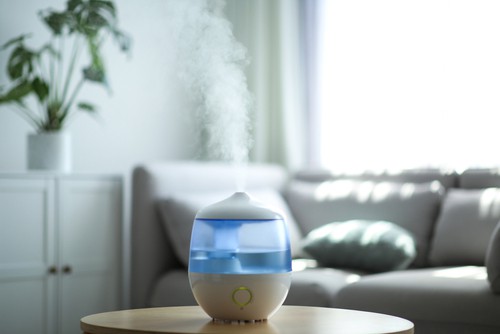
Low humidity levels can also cause black spots on houseplant leaves. When the air is too dry, plants can become dehydrated, which can lead to brown leaf tips and black spots. To prevent this, it’s important to maintain a consistent level of humidity around the plant.
5. Sunburn
Plants can also develop black spots on their leaves due to sunburn. This can happen when plants are exposed to too much direct sunlight, especially during the hottest parts of the day. Sunburned leaves may also appear white or yellow in addition to black spots.
Pests that Cause Black Spots
Pests can also cause black spots on houseplant leaves. Common pests that can cause black spots include aphids, mealybugs, scale, spider mites, thrips, and gnats. These pests can cause damage to the leaves and make them more susceptible to fungal infections.
Aphids are small, soft-bodied insects that feed on plant sap and can cause black spots on leaves. They are usually found on the undersides of leaves and can be easily identified by their pear-shaped bodies.
Mealybugs are also soft-bodied insects that feed on plant sap and can cause black spots on leaves. They are covered in a white, powdery substance that makes them easy to identify.
Scale insects are small, oval-shaped insects that can cause black spots on leaves. They are usually found on the stems and leaves of plants and can be difficult to identify because they look like small bumps. Spider mites are tiny, spider-like insects that can cause black spots on leaves. They are usually found on the undersides of leaves and can be identified by the fine webbing they produce.
Thrips are small, slender insects that can cause black spots on leaves. They are usually found on the undersides of leaves and can be identified by their long, narrow bodies. Gnats are small, flying insects that can cause black spots on leaves. They are attracted to moist soil and can be identified by their small size and black color.
To prevent a pest infestation, it is important to keep houseplants healthy and well-maintained. Regular watering, fertilizing, and pruning can help prevent pests from infesting plants.
If a pest infestation does occur, it is important to identify the pest and take appropriate measures to control it. This may include using insecticidal soap, neem oil, or other natural remedies to control the pest and prevent further damage to the plant.
Treatment Methods for Black Spots
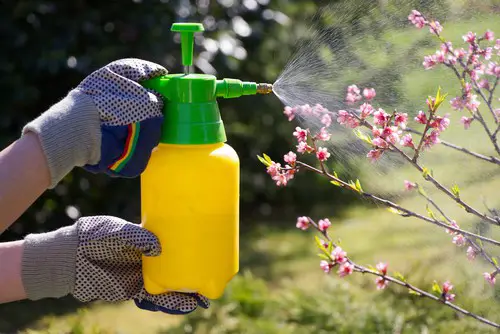
When black spots appear on houseplant leaves, it is important to take action quickly to prevent further damage. Here are some effective treatment methods for black spots on houseplant leaves:
1. Identify the Cause
Before treating black spots on houseplant leaves, it is important to identify the cause. Overwatering, fungal infections, and pests are common causes of black spots. Once the cause is identified, appropriate treatment can be administered.
2. Horticultural Oil
Horticultural oil is an effective treatment for black spots caused by fungal infections. It works by changing the pH on the leaf surface to one the fungus can’t survive. The oil makes the solution stick, and the cost is around four cents a gallon. A dash of horticultural oil or horticultural soap can be added to the solution for better results.
3. Prevention
Prevention is key to avoiding black spots on houseplant leaves. Water the plant at the base, not the top, and water it earlier in the day. Ensure plenty of ventilation in the area and don’t mist the leaves. Remove the affected leaves to prevent the fungus from continuing to spread.
4. Pesticides
In severe cases of black spots caused by pests, pesticides may be necessary. Insecticidal soap, neem oil, and rubbing alcohol are effective pesticides for treating black spots caused by pests.
5. Fertilizing
Fertilizing your houseplants can help prevent black spots. Fertilizer provides plants with the necessary nutrients to grow strong and healthy, which makes them more resistant to diseases and pests.
6. Home Remedies
Baking soda is a popular home remedy for treating black spots on houseplant leaves. Mix one tablespoon of baking soda with one gallon of water and spray the solution on the affected leaves. This will help neutralize the pH of the leaf surface and prevent further fungal growth.
Preventing Black Spots on Houseplants

Preventing black spots on houseplant leaves is essential to keep them healthy and looking their best. Here are some tips to help prevent black spots on houseplants:
1. Watering
Overwatering and underwatering can both lead to black spots on houseplant leaves. To prevent this, make sure to water your houseplants properly. Water your plants when the top inch of soil is dry to the touch, and make sure to water thoroughly. Avoid watering your plants too frequently, as this can lead to root rot and other problems.
2. Drainage
Good drainage is essential for preventing black spots on houseplant leaves. Make sure your plant pots have drainage holes and that excess water can drain away from the roots. Use a well-draining potting mix to ensure proper drainage.
3. Ventilation
Proper ventilation is important to prevent fungal growth and other problems that can lead to black spots on houseplant leaves. Make sure your houseplants have good air circulation by placing them in a well-ventilated area. Avoid placing them in drafty areas or near air conditioning vents.
4. Spring Cleaning
Spring cleaning is an excellent time to prevent black spots on houseplant leaves. Clean your plants by wiping the leaves with a damp cloth to remove any dust or debris that may have accumulated. This will also help prevent pests from taking up residence on your plants.
5. Sanitation
Sanitation is crucial to prevent the spread of disease and pests that can lead to black spots on houseplant leaves. Make sure to remove any dead or damaged leaves immediately, as they can harbor pests and disease. Also, avoid using the same watering can or other tools on multiple plants, as this can spread disease.
6. Location
The location of your houseplants can also affect their health. Make sure to place your plants in an area that receives the right amount of light for their needs. Avoid placing them in direct sunlight, which can scorch the leaves and lead to black spots.
7. Plant Health
Keeping your houseplants healthy is essential to prevent black spots on their leaves. Make sure to fertilize your plants regularly, as this will provide them with the nutrients they need to thrive. Also, make sure to check for pests regularly and treat any problems promptly.
8. Maintenance
Proper maintenance is essential for preventing black spots on houseplant leaves. Make sure to repot your plants as needed, as this will provide them with fresh soil and prevent root-bound problems. Also, make sure to prune your plants regularly to remove any dead or damaged leaves.
Signs of Worsening Condition
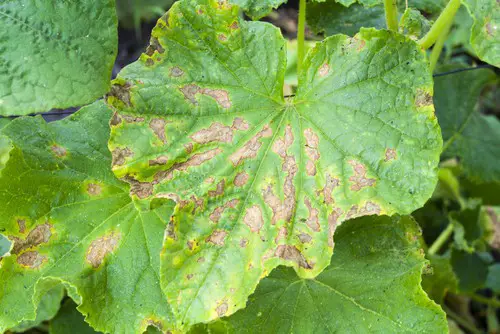
If left untreated, black spots on houseplant leaves can lead to a worsening condition. Here are some signs to look out for:
1. Wilting
One of the first signs of a worsening condition is wilting. As the disease progresses, the leaves of the plant may start to wilt and droop. This is because the fungus or bacteria causing the black spots is weakening the plant and preventing it from absorbing water and nutrients properly.
2. Yellow Leaves
Another sign of a worsening condition is yellow leaves. As the disease progresses, the leaves of the plant may start to turn yellow. This is because the fungus or bacteria is causing damage to the plant’s cells, which can lead to a loss of chlorophyll and a yellowing of the leaves.
3. Plant Disease
Black spots on houseplant leaves are often a sign of a plant disease. If left untreated, the disease can spread to other parts of the plant and even to other plants nearby. It is important to identify the cause of the black spots and take action to prevent the disease from spreading.
4. Weakened Plant
As the disease progresses, the plant may become weakened. This can make it more susceptible to other diseases and pests. A weakened plant may also have a harder time recovering from the disease, even with treatment.
5. Brown Leaf Tips
In addition to black spots and yellow leaves, a worsening condition may also cause brown leaf tips. This is because the disease can cause damage to the plant’s vascular system, which can prevent water and nutrients from reaching the tips of the leaves.
It is important to take action as soon as you notice any signs of a worsening condition. This may include removing infected leaves, treating the plant with fungicides or bactericides, and improving the plant’s growing conditions. With the right care and attention, most houseplants can recover from black spots and other diseases.
Role of Environmental Factors
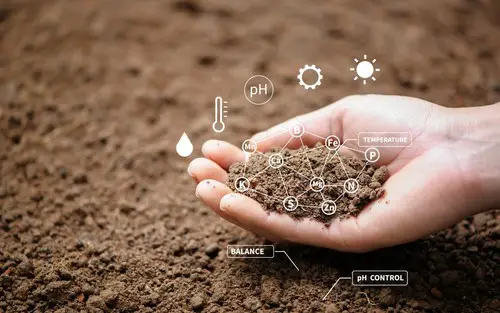
Environmental factors play a crucial role in the health of houseplants. Several factors can cause black spots on leaves. Here are some of the most common environmental factors that can contribute to the development of black spots on houseplant leaves:
1. Overwatering
Overwatering is one of the most common environmental factors that can cause black spots on houseplant leaves. When a plant is overwatered, the roots become waterlogged, which can lead to root rot. As a result, the plant is unable to absorb nutrients and water properly, which can cause the leaves to develop black spots.
2. Wet Conditions
Wet conditions can also contribute to the development of black spots on houseplant leaves. When the air around the plant is too humid, it can create an environment that is conducive to fungal growth. As a result, the leaves can develop black spots.
3. Inconsistent Watering
Inconsistent watering can also cause black spots on houseplant leaves. When a plant is not watered regularly, it can become stressed, which can lead to the development of black spots on the leaves.
4. Low Humidity
Low humidity can also contribute to the development of black spots on houseplant leaves. When the air around the plant is too dry, it can cause the leaves to lose moisture, which can lead to the development of black spots.
5. Sunburn
Sunburn can also cause black spots on houseplant leaves. When a plant is exposed to too much direct sunlight, it can cause the leaves to become damaged, which can lead to the development of black spots.
6. Winter
During the winter months, the air inside homes can become very dry. This can cause the leaves of houseplants to lose moisture, which can lead to the development of black spots.
7. Misting
Misting can also contribute to the development of black spots on houseplant leaves. When a plant is misted too often, it can create an environment that is conducive to fungal growth, which can cause the leaves to develop black spots.
8. Location
The location of a houseplant can also contribute to the development of black spots on the leaves. For example, if a plant is placed near a cold draft, it can cause the leaves to become damaged, which can lead to the development of black spots.
9. Soil and pH
The soil and pH of the soil can also contribute to the development of black spots on houseplant leaves. If the soil is too acidic or too alkaline, it can cause the leaves to become damaged, which can lead to the development of black spots.
10. Temperatures
Extreme temperatures can also cause black spots on houseplant leaves. When a plant is exposed to temperatures that are too hot or too cold, it can cause the leaves to become damaged, which can lead to the development of black spots.
Houseplant Care Tips

Taking care of houseplants requires some effort, but it is well worth it when you see your plants thriving. Here are some tips to help you keep your houseplants healthy and prevent black spots from appearing on their leaves.
1. Watering
Overwatering is a common cause of black spots on houseplant leaves. To avoid this, water your plants at the base, not the top. This will prevent water from getting on the leaves, which can lead to fungal diseases and leaf spotting. Water your plants earlier in the day to give them time to dry before nightfall.
2. Plant Leaves and Stems
When you water your plants, avoid splashing water on the leaves and stems. This can lead to fungal diseases and leaf spotting. If you notice any black spots on the leaves, remove them immediately to prevent the fungus from spreading.
3. Roots
Healthy roots are essential for healthy plants. Make sure your plants have good drainage and are not sitting in water. If the roots are waterlogged, they can’t absorb nutrients properly, which can lead to yellow leaves and other problems.
4. Houseplants and Indoor Plants
Houseplants and indoor plants need regular maintenance to stay healthy. Check your plants regularly for any signs of problems, such as yellow leaves or black spots on the leaves.
5. Spring Maintenance
Spring is a good time to give your plants some extra attention. Repot them if necessary, and check the potting mix to make sure it is still fresh.
6. Window Placement
Make sure your plants are getting enough light. Place them near a window that gets plenty of sunlight. If your plants are not getting enough light, they may become leggy and weak.
7. Plant Health
Healthy plants are less likely to develop black spots on their leaves. Make sure your plants are getting the right amount of nutrients and water. Fertilize your plants periodically, but be careful not to over-fertilize them.
Frequently Asked Questions

What causes black spots to appear on plant leaves?
Black spots on plant leaves are often caused by fungal infections such as “Leaf Spot.” The specific fungus attacking the plant may vary, but the treatment is generally the same. Overwatering, poor air circulation, and high humidity can also contribute to the development of black spots on plant leaves.
How can I prevent black spots from forming on my houseplant leaves?
To prevent black spots from forming on houseplant leaves, it is important to avoid overwatering and to ensure proper drainage. Good air circulation and humidity control can also help prevent fungal infections. Regularly inspecting plants for signs of pests or disease can also help catch issues before they become more serious.
What are some natural remedies for treating black spots on plant leaves?
Natural remedies for treating black spots on plant leaves include using a solution of neem oil and water, spraying a mixture of baking soda and water on the affected leaves, or using a solution of hydrogen peroxide and water.
It is important to follow the instructions carefully and test any new treatment on a small area of the plant before applying it to the entire plant.
Are black spots on indoor plant stems a cause for concern?
Black spots on indoor plant stems can be a cause for concern, as they may indicate a more serious issue such as a fungal infection or pest infestation. It is important to inspect the plant thoroughly and address any issues promptly to prevent further damage.
Can black spots on plant leaves be a sign of a larger infestation or disease?
Yes, black spots on plant leaves can be a sign of a larger infestation or disease. It is important to inspect the plant thoroughly for any signs of pests or disease and take appropriate action to prevent further damage.
What are some common treatments for black spot fungus on houseplants?
Common treatments for black spot fungus on houseplants include using a fungicide, removing affected leaves or stems, and improving air circulation and humidity control.
It is important to follow the instructions carefully and address any underlying issues such as overwatering or poor drainage to prevent the fungus from returning.

Hey, I’m Lisa and I’ve been an avid gardener for over 30 years. I love writing, talking and living in the garden! Feel free to connect with me on my socials below

